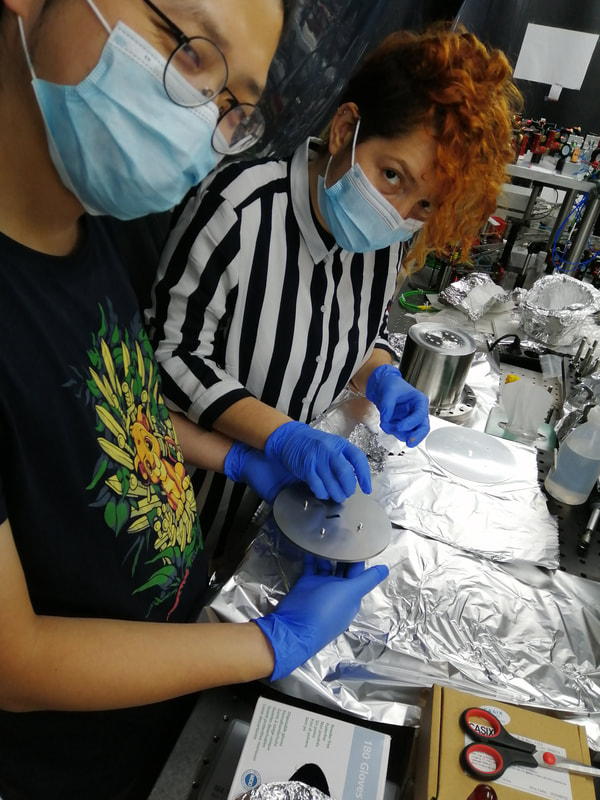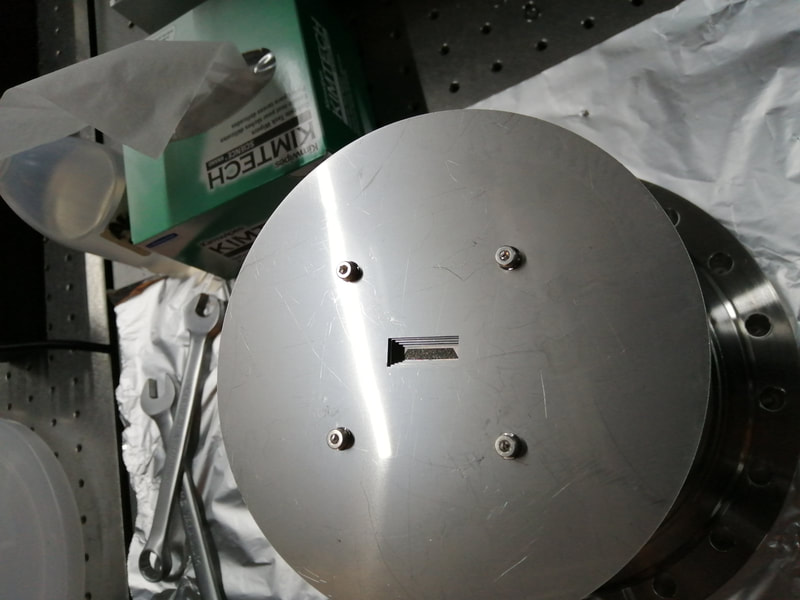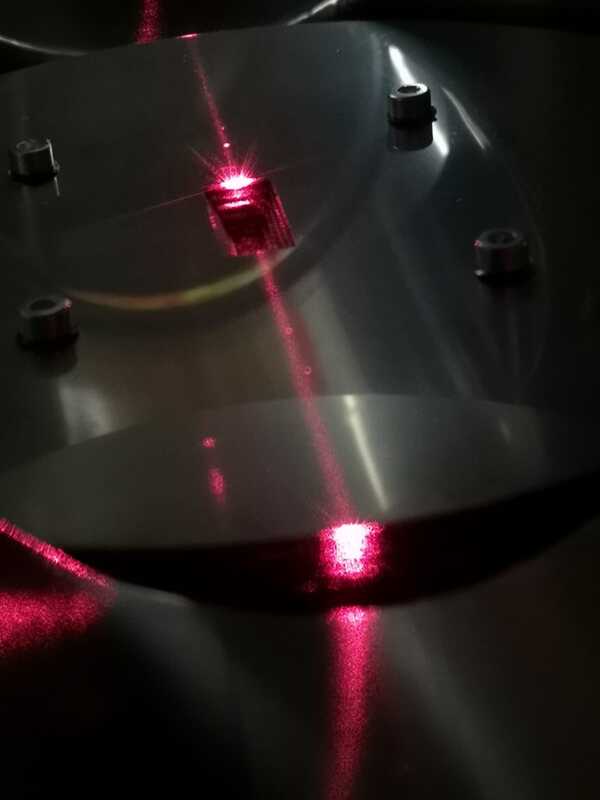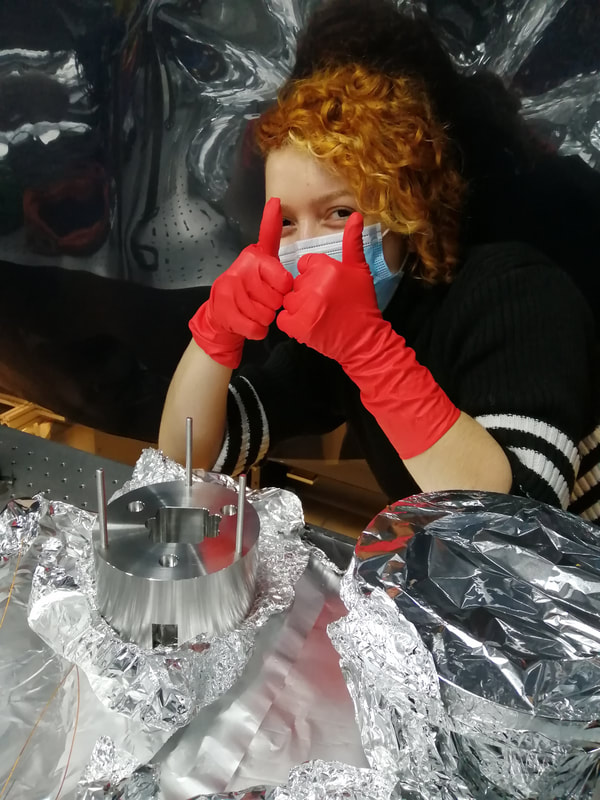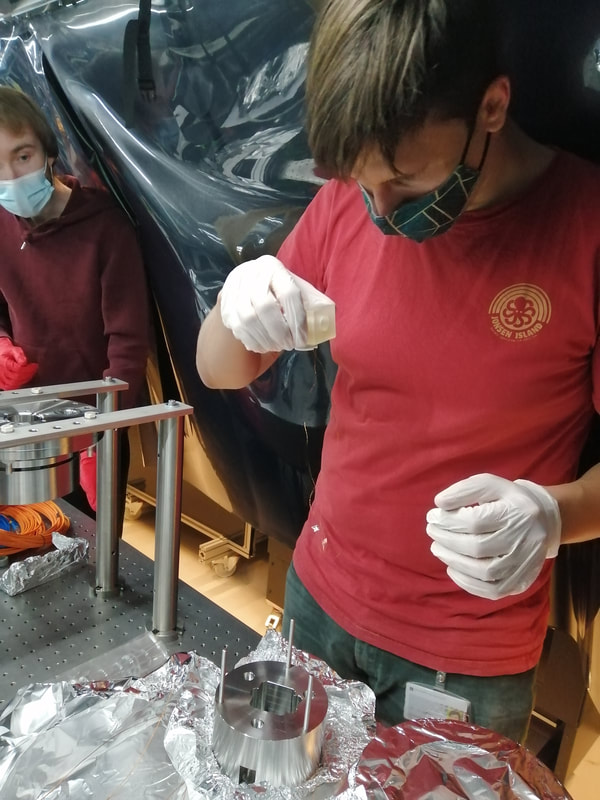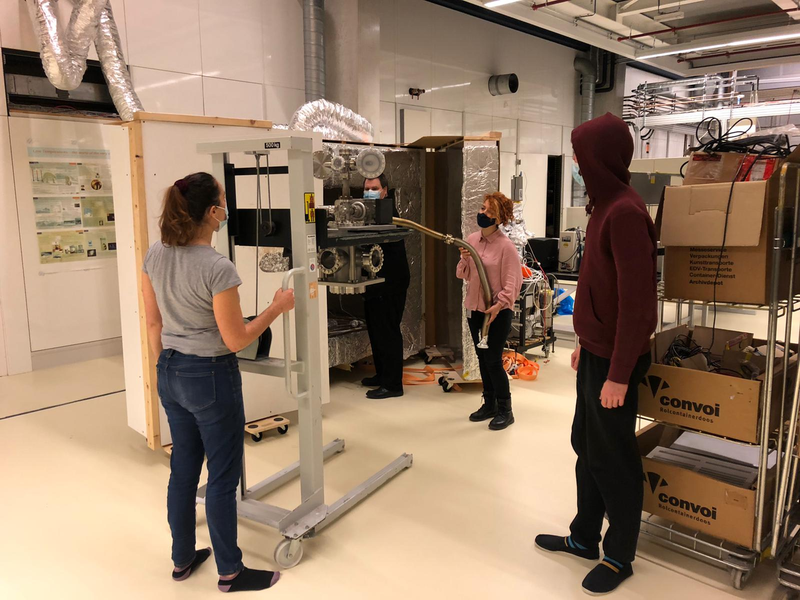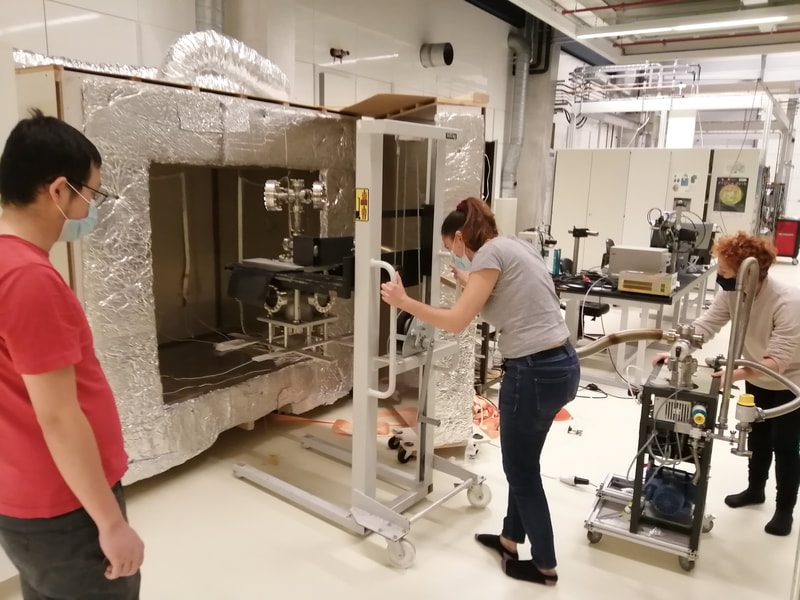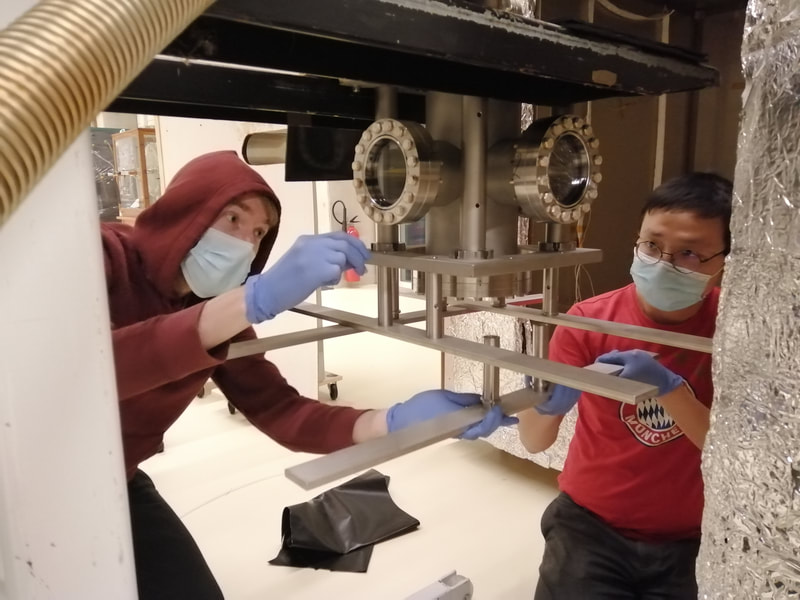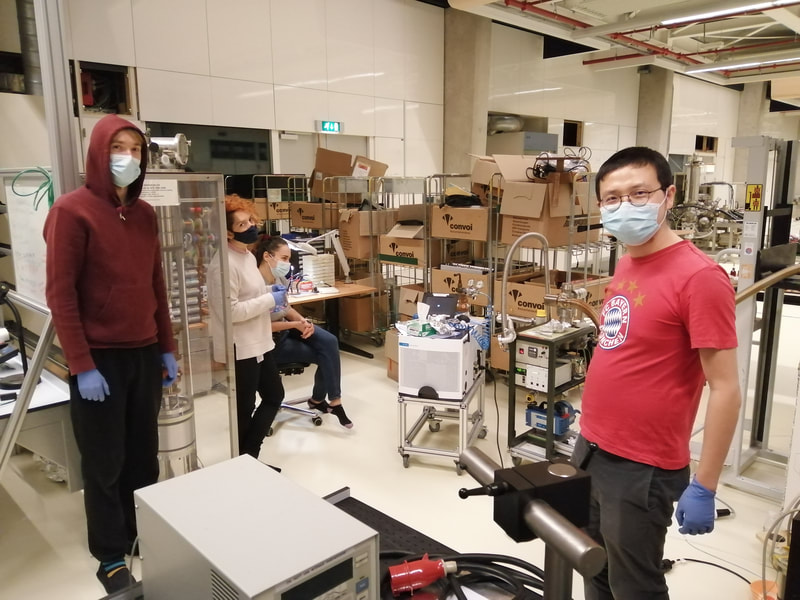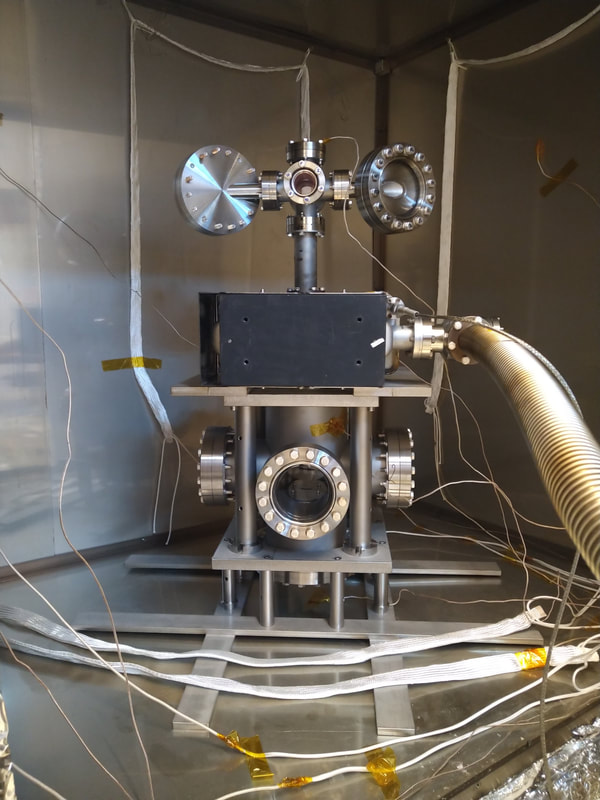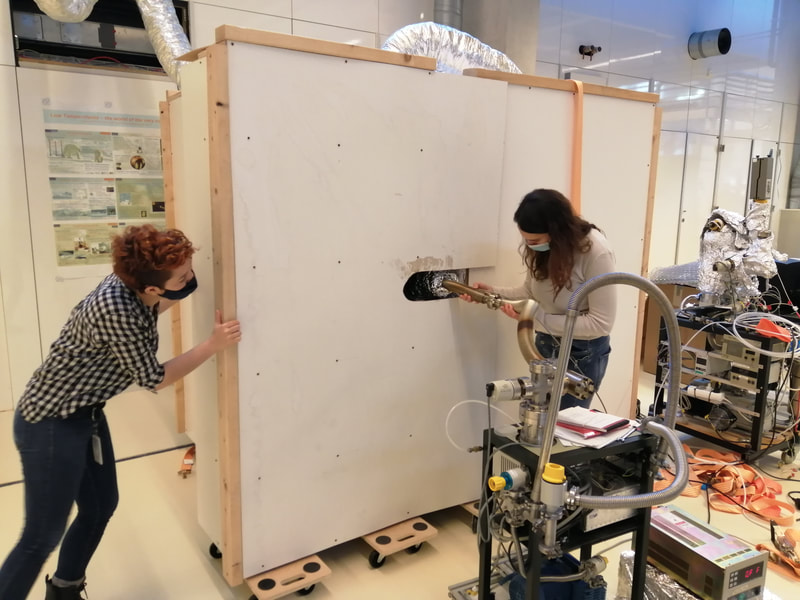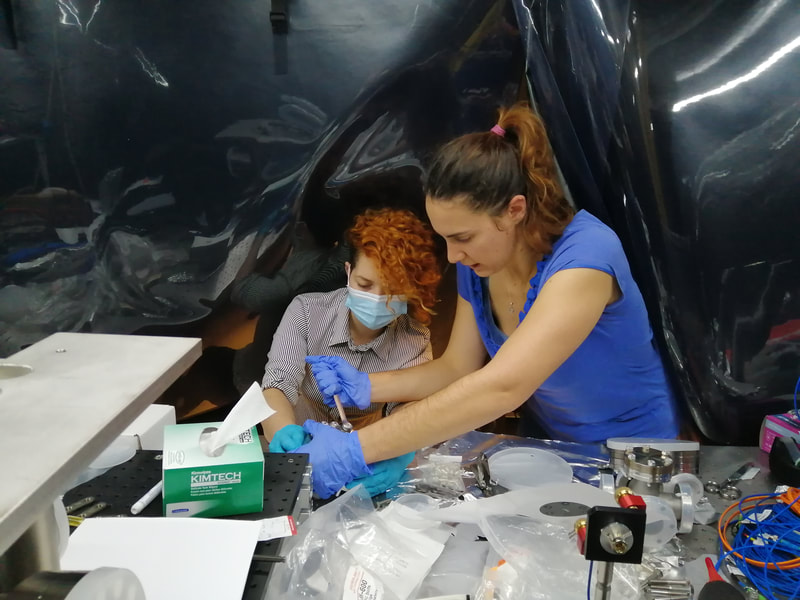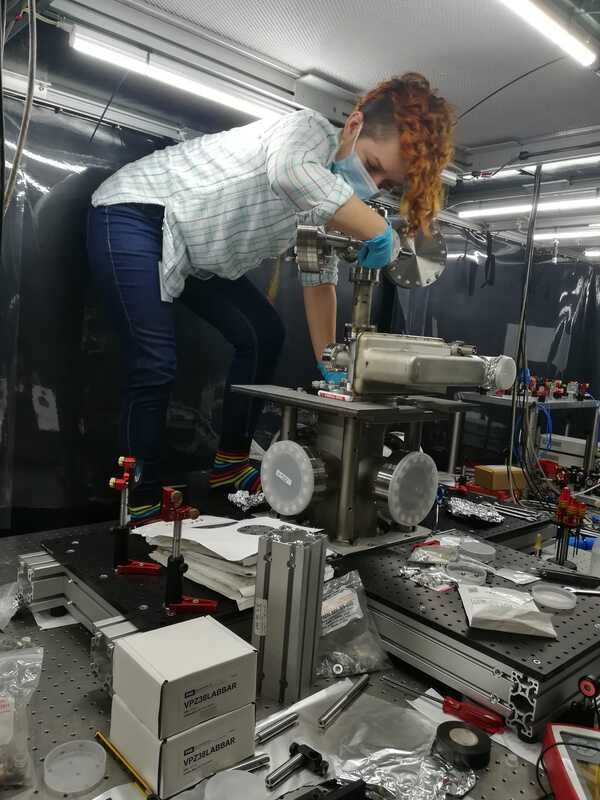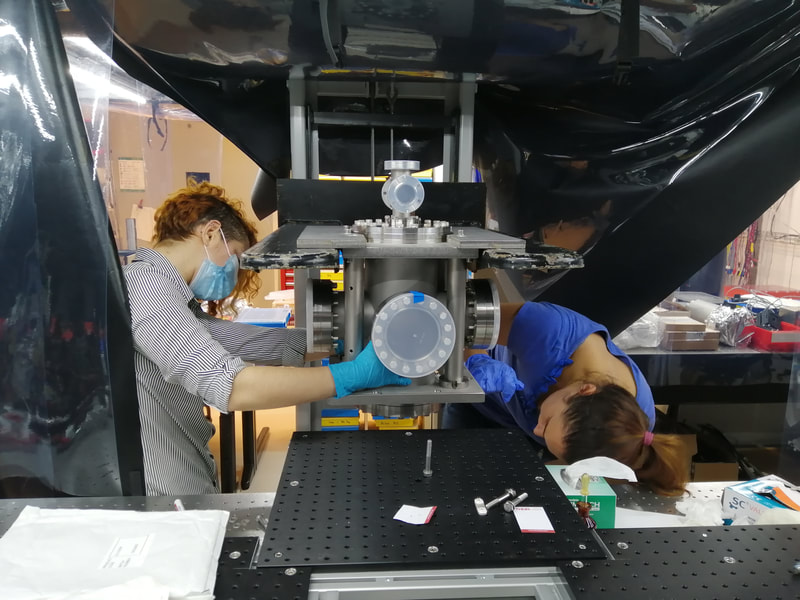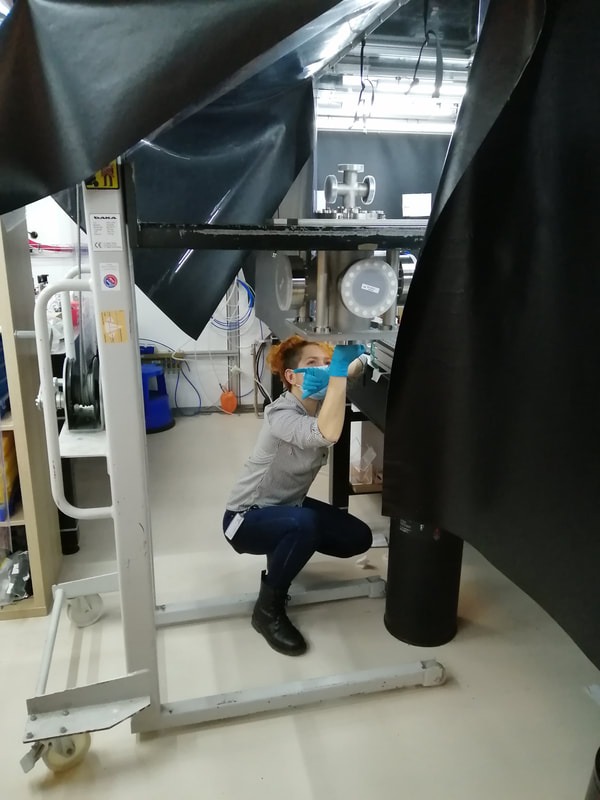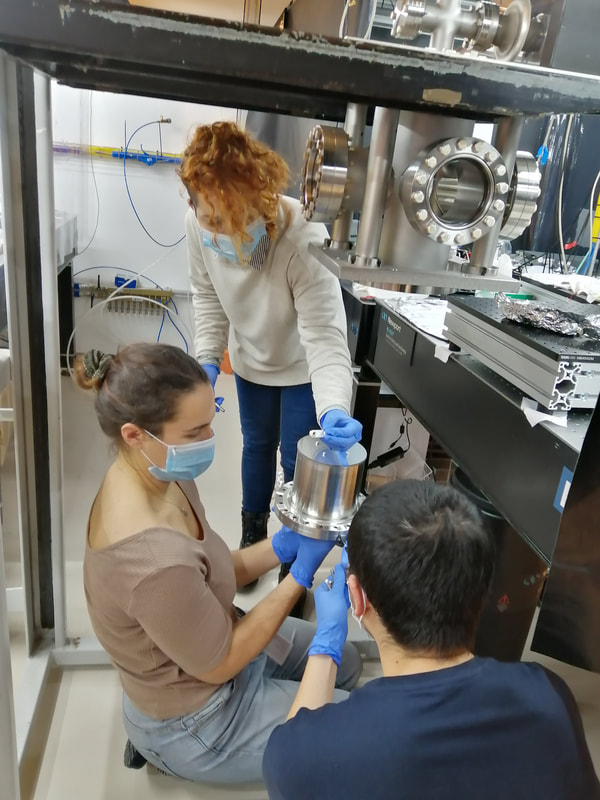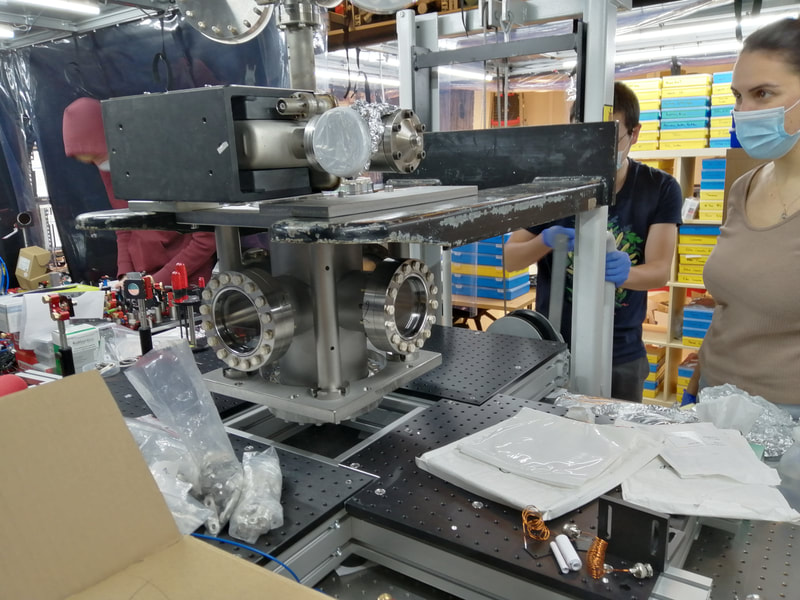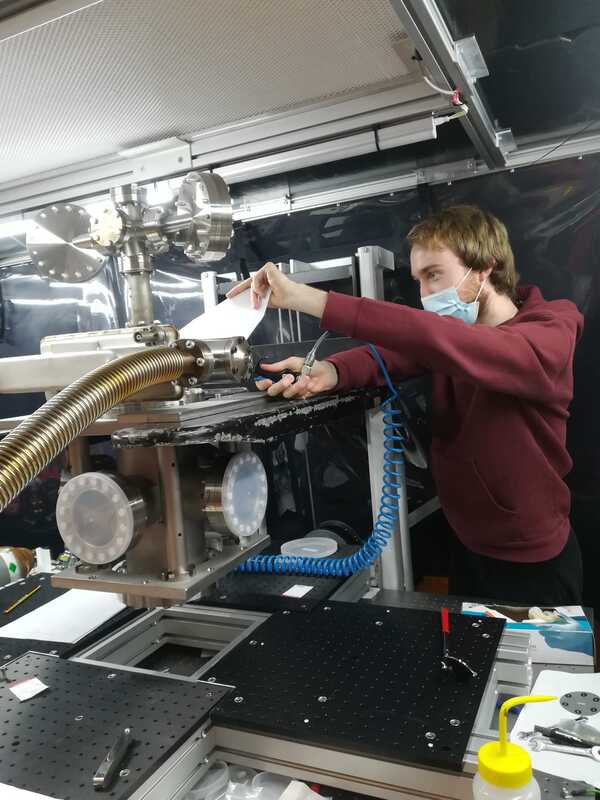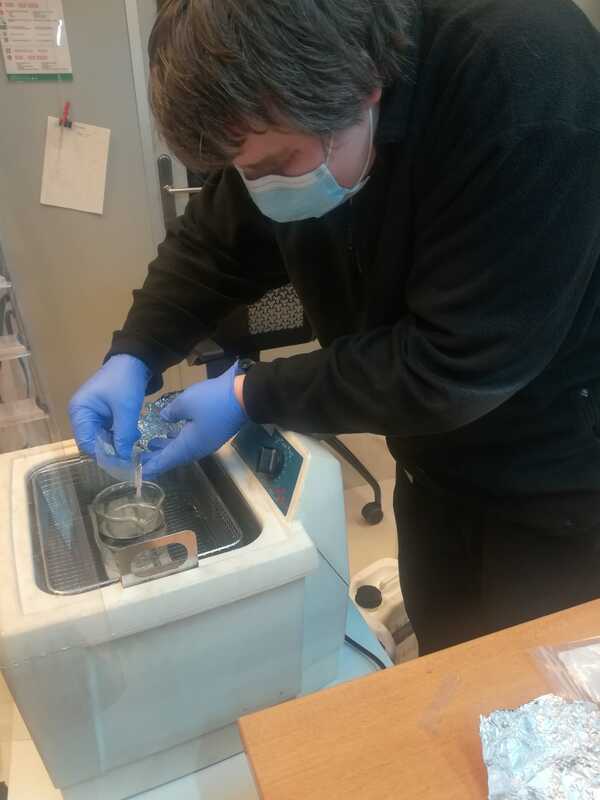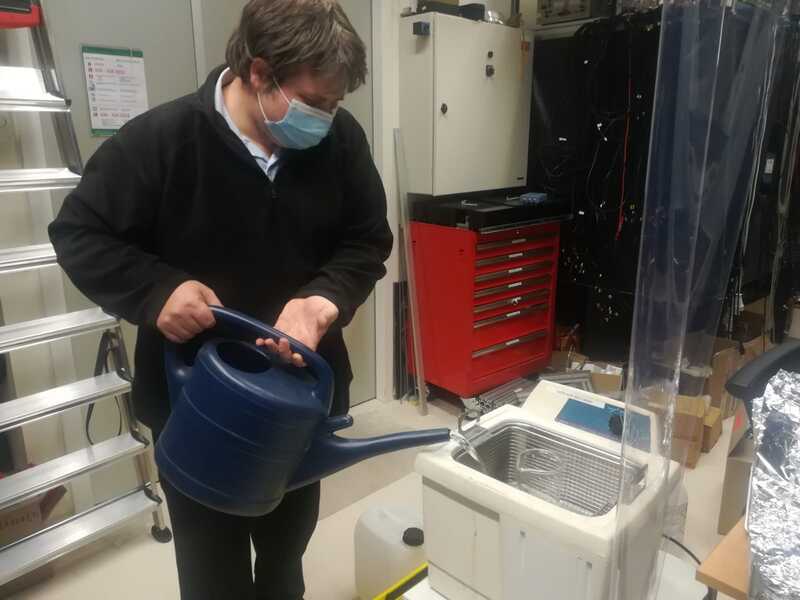Automatically relocking the External Cavity Diode Lasers (ECDLs) by wavemeter and/or cavity transmission using Redpitaya
By Mehrdad Zarei (Nicolas Copernicus University, Torun, Poland)
|
|
In this project, Mehrdad presents a web application dedicated to the Redpitaya board for automatically and real-time relocking of the external-cavity diode lasers (ECDLs) by cavity transmission and/or wavemeter signals. This web application is specifically used in Strontium (Sr) Optical Tweezer Machine for quantum computing and simulation. But it can be used in different cold atom applications, such as optical atomic clocks, transportable optical clocks, future satellite missions, space missions, and wherever you want to fully control the ECDLs.
The documentation and source code can be found on GitHub. |
Laboratory work at the University of Amsterdam, the Netherlands
- by Camila Beli Silvia
- by Camila Beli Silvia
Oven assembling: Camila is mounting the heating shields on the atomic beam source. The atomic beam source is assembled and aligned with the source.
Cavity assembling: Camila is assembling the vibration isolation stack for the superradiant cavity. It is then placed in the vibration isolation stack.
Baking process: cleaning the superradiant clock machine by baking it in a very big oven designed by Dr. Shayne Bennets.
Cleaning and assembling: the pieces for the superradiant clock machine are cleaned using an ultrasonic bath.
Afterwards, the clock machine is assembled.
Afterwards, the clock machine is assembled.

